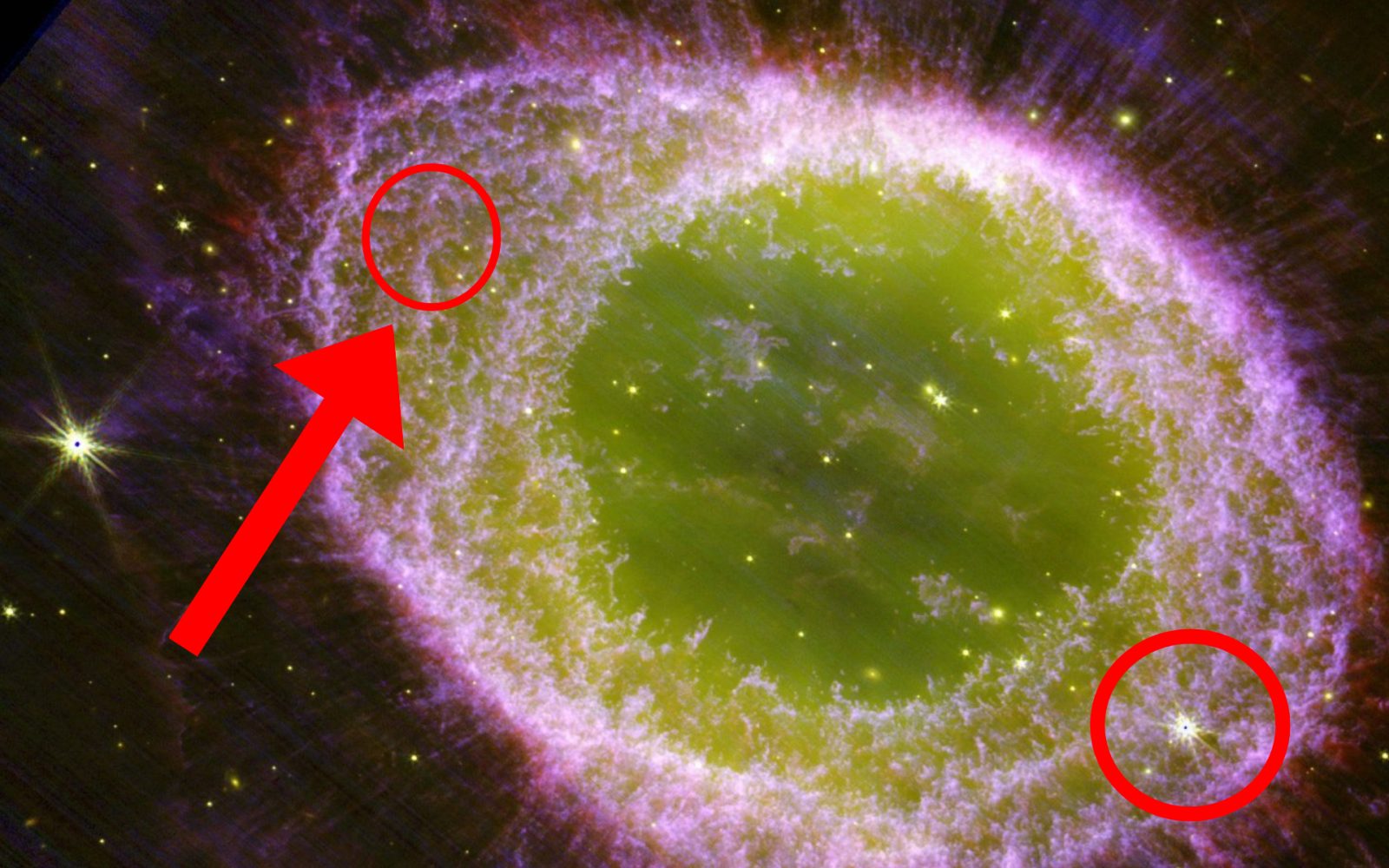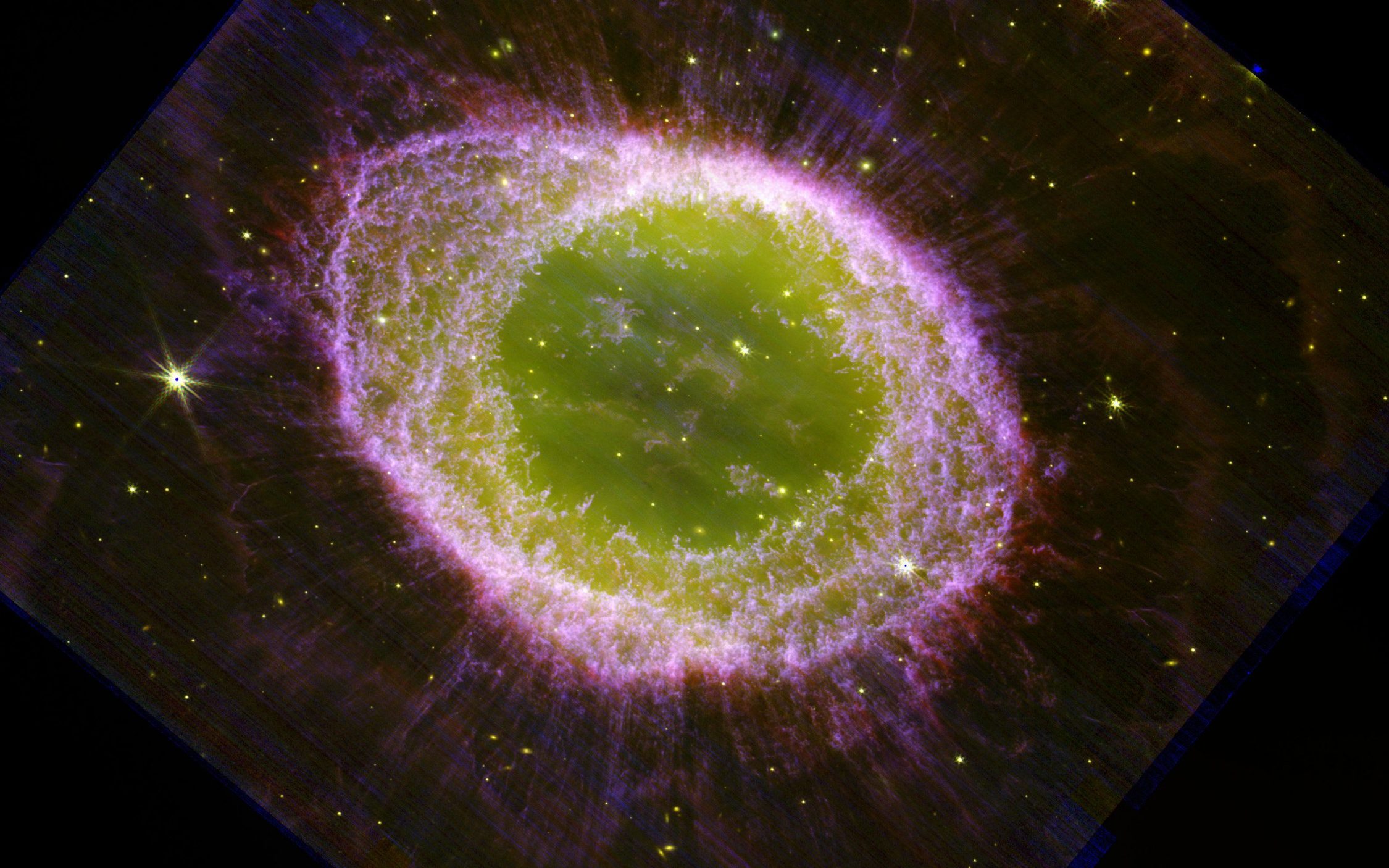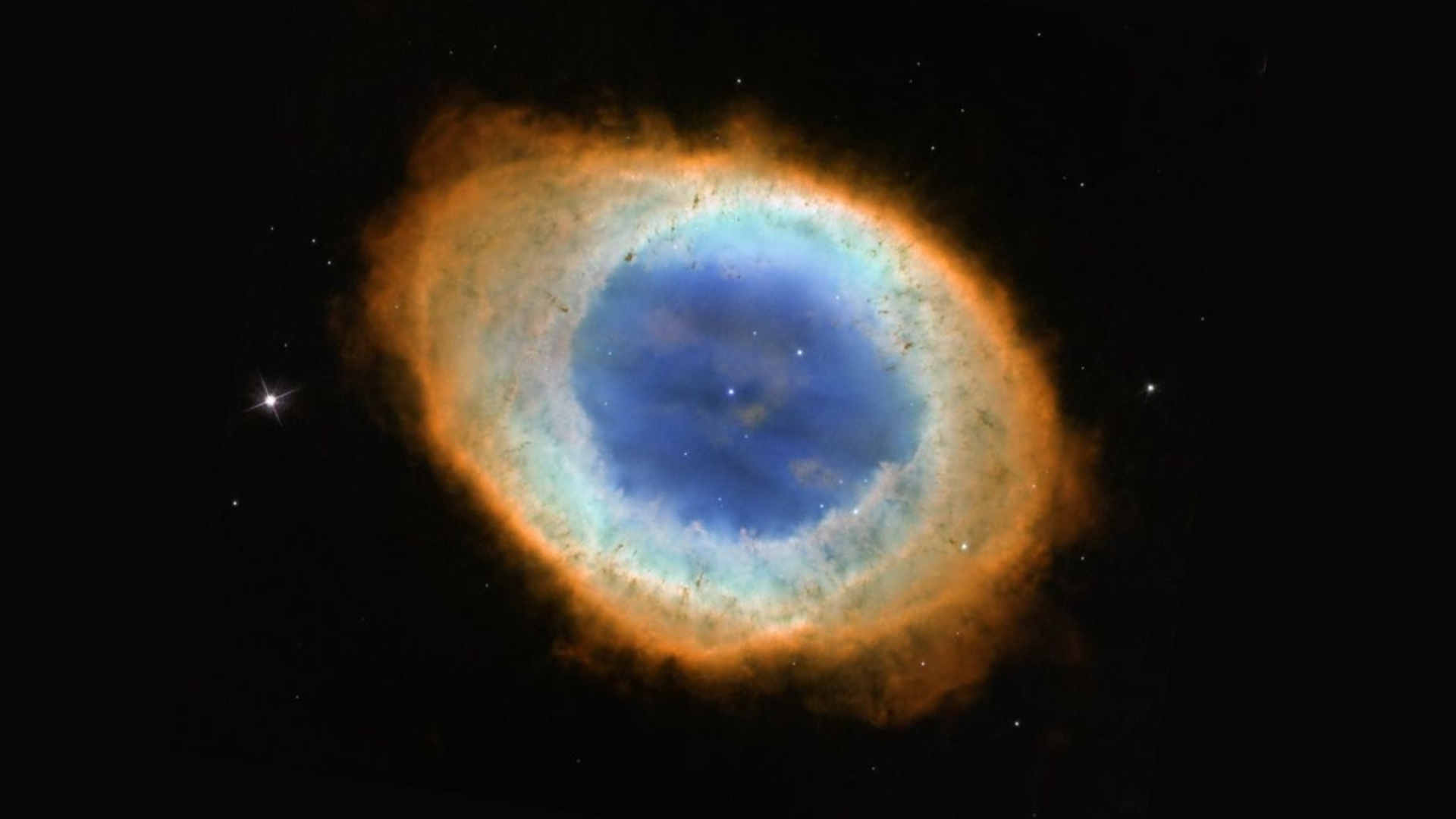
The Ring Nebula is one of the night sky’s most well-known and studied planetary nebulae. Original images from Hubble captured the dying star from the first nearly a decade ago. Now, a new image from the James Webb Space Telescope shows the famous nebula in detail you’ve never seen before…
The Ring Nebula is approximately 2,300 light-years away from Earth, making it visible with a telescope or even a pair of binoculars in excellent viewing conditions. Its distinct look, strikingly resembling an eye, has made it a popular target for astrophotographers and astronomers.
This particular nebula is believed to be the result of a star similar in mass to the Sun reaching the final stages of its evolution. As the central star exhausts its nuclear fuel, it throws out its outer layers of ionized gas and dust, creating the stunning structure we see today.
The central star, which has now become a white dwarf, can still be observed at the center.


Join our Discord Server: Join the community with forums and chatrooms about space!
Unlike Webb’s predecessor, the Hubble Space Telescope, which mainly observes in visible and ultraviolet light, the James Webb telescope specializes in infrared observations. This makes it key for studying distant galaxies and nebulae because it can see through dust clouds that normally would obscure visible light.
Astronomers hope to further study the Ring Nebula in hopes that it could shed light on cosmic chemistry that makes life possible in the universe.
Looking for a decent telescope to spot nebulae like this? I’d highly recommend looking at these Celestron telescope options.
FTC: We use income earning auto affiliate links. More.



Comments